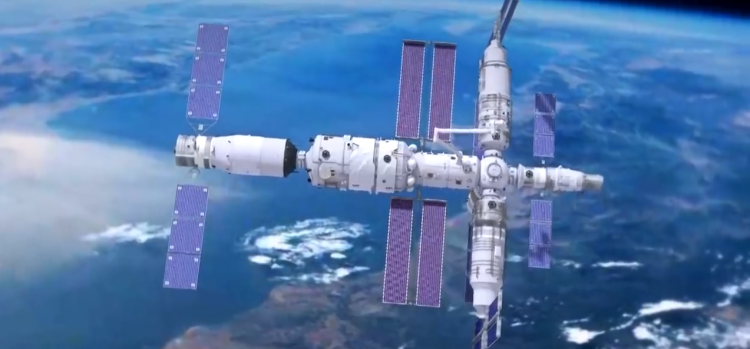Shenzhou 14 astronauts are only getting settled into their six-month mission aboard China's space station, but Shenzhou 15 is already on standby in case of an emergency in space.
Shenzhou 14 launched on June 4 and arrived seven hours later to the Tianhe space station core module with astronauts Chen Dong, Liu Yang, and Cai Xuzhe.
The trio's time in orbit has gone well so far, but the Shenzhou 15 spacecraft and a Long March 2F rocket have been assembled and tested on the ground in case of an emergency aboard China's Tiangong space station.
"When a spaceship is performing tasks in space, there must be another manned spaceship on standby on the ground for emergency rescue," Jia Shijin, chief designer of the crewed spacecraft system under the China Academy of Space Technology (CAST), explained to CCTV.
"If the spaceship in space is out of order and can't return, then we'll quickly launch this rescue spaceship, which can enter orbit in a very short time and bring the astronauts back to Earth," Jia added.
It had previously been stated that Shenzhou 14, which was on standby throughout the recent Shenzhou 13 mission, may have been ready for launch in as little as nine days.
If everything goes well with Shenzhou 14, Shenzhou 15 will launch in December to carry out its major mission: sending three additional astronauts to the completed three-module Tiangong. They will meet the Shenzhou 14 astronauts there for Tiangong's first-ever crew handover.
Tianhe, the 54-foot (16.6-meter) space station core module launched in April 2021, awaits the astronauts. To date, it has been visited by six astronauts from the Shenzhou 12 and Shenzhou 13 missions.
The three newcomers will be in charge of monitoring the introduction of two new modules, Wentian ("Quest for the Heavens") and Mengtian ("Dreaming of the Heavens"), in late July and October, respectively.
After the modules dock with Tianhe, the crew will utilize Tianhe's huge robotic arm to relocate the modules from the forward docking port to lateral ports in collaboration with ground workers.
The T-shaped Tiangong space station would be completed if these missions were successful.
China began its space station project in 1992, with the goal of sending humans to space and building small test labs for short-term stays.
The completed Tiangong station is about 20% as massive as the International Space Station, according to Chinese space officials.




